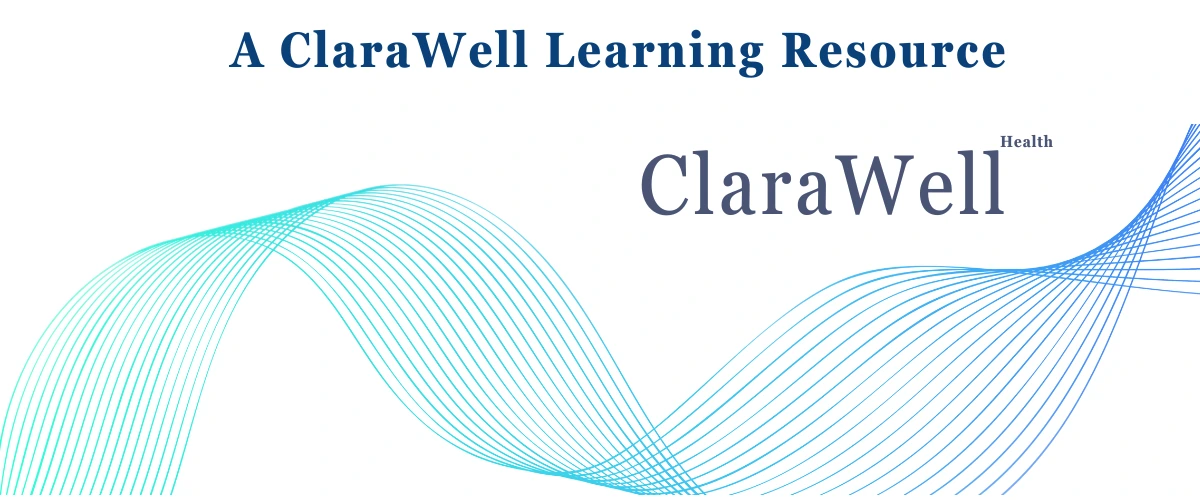Learn with ClaraWell
CBT-I for Insomnia

CBT-I: Cognitive Behavioural Therapy for Insomnia
CBT-I: Cognitive Behavioural Therapy for Insomnia
CBT-I is the gold-standard treatment for insomnia. It helps you change the thoughts, habits, and sleep behaviors that keep you stuck—without medication. These cards break down how it works and what to expect if you try it.
Take the insomnia screener if you’re wondering whether CBT-I might be a good fit.
🧠 What Is CBT-I For Insomnia?
Cognitive Behavioural Therapy for Insomnia helps people change the thoughts and behaviors that interfere with sleep. It’s structured, time-limited, and backed by decades of research.
🛌 Why It Works for Insomnia
Insomnia isn’t just about sleep. It’s also about how you react to poor sleep—mentally and behaviorally. CBT-I addresses both, helping you rebuild confidence in your sleep system.
🧾 Step 1: Sleep Education
CBT-I starts with learning. You’ll understand how sleep works, why it gets disrupted, and what patterns may be fueling the problem.
📊 Step 2: Sleep Tracking
You’ll track your sleep for a few weeks. Not to obsess—just to notice patterns. This helps tailor the approach to your specific situation.
⏱️ Step 3: Sleep Restriction
This means limiting time in bed to match actual sleep. It builds up sleep pressure and helps you fall asleep faster. It’s temporary—and surprisingly effective.
🛏️ Step 4: Stimulus Control
Spending too much time awake in bed trains your brain to associate it with frustration. CBT-I helps you reset that association so your bed feels restful again.
💭 Step 5: Cognitive Restructuring
This is where the “CBT” part kicks in. You’ll learn how to identify and reframe thoughts like “I’ll never sleep” or “I’m broken” that can worsen insomnia.
🌙 What About Relaxation Techniques?
Things like breathing exercises or meditation are often included. They’re helpful—but CBT-I works even if you’re not naturally “relaxed.” The core is building sleep drive and healthy sleep associations.
❗ CBT-I vs. Sleep Hygiene
They’re not the same. Sleep hygiene is about habits. CBT-I is structured therapy that addresses insomnia at its root. It’s more than tips—it’s transformation. Learn more in our guide on natural sleep strategies.
🤝 How to Start CBT-I
You don’t need a diagnosis to start. Many therapists offer CBT-I, and there are online platforms as well. What matters is structure, training, and a plan that adapts to you.
🔄 The Results Take Time
Most people start to feel improvement within 2 to 6 weeks. It’s not a quick fix—but it is a lasting one. The goal is to help you sleep better for life.
🧑🤝🧑 Formats: In Person, Group, or Online
You can do CBT-I one-on-one with a provider, in small groups, or through self-guided digital programs. The most important part is consistency and support that fits your life.
Try the CBT-I Coach app, developed by the U.S. Department of Veterans Affairs—it’s free and built for anyone. Or explore the Society of Behavioral Sleep Medicine directory to find qualified CBT-I providers.
CBT-I doesn’t make you “sleep perfectly.” It helps you understand how your brain and body relate to sleep—and gives you tools to gently reset that connection. With time and guidance, most people find deeper rest and more trust in their ability to sleep.
Wondering if your sleep patterns align with what CBT-I helps address? ClaraWell™ offers a free screener to help you reflect on your habits and assess your risk.
Take the Insomnia Risk Screener